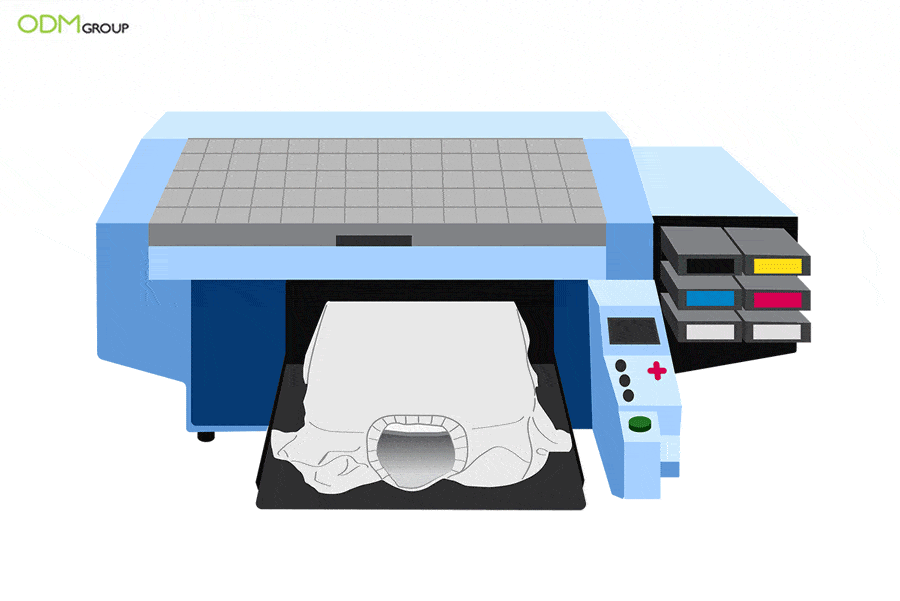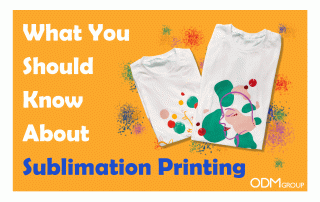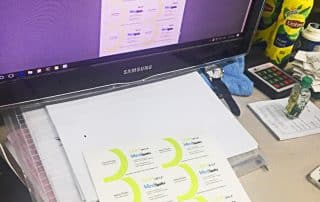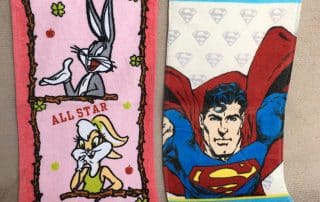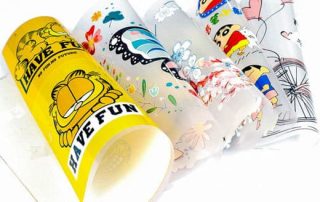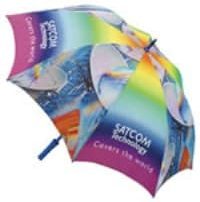DTF printing is a game-changer, combining the best of traditional printing techniques with advanced digital technology. It has rapidly gained popularity for its ability to produce high-resolution, full-colour prints on a wide range of surfaces, including fabrics, plastics, and even glass.
Gone are the limitations of traditional printing methods, as DTF enables intricate designs, gradients, and photographic reproductions to come to life with stunning clarity.
In this blog, let’s delve deeper into the intricacies of DTF printing, exploring its benefits, applications, and potential impact on the promo products industry.
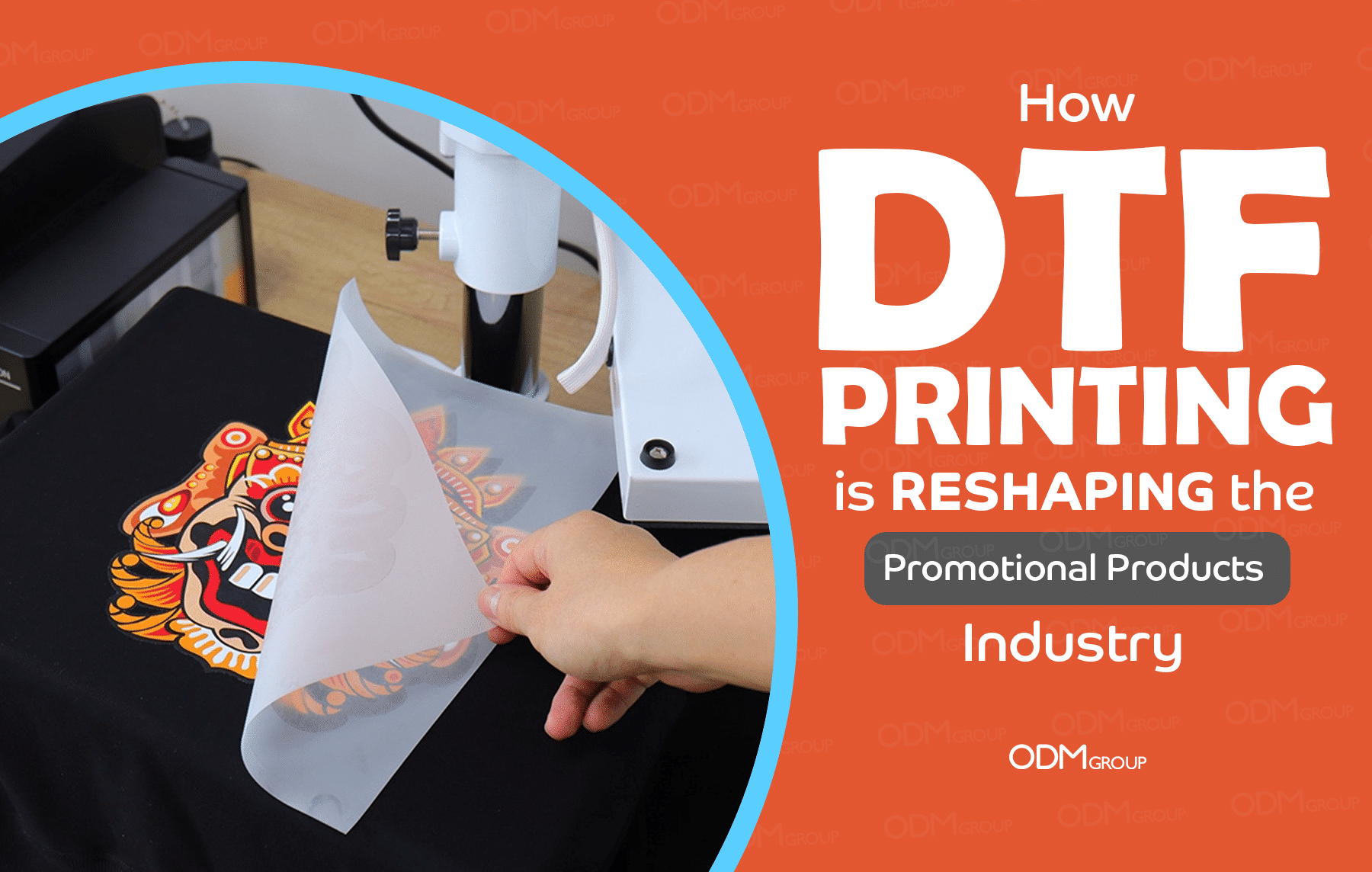
With this remarkable technology, intricate designs, gradients, and photorealistic images come to life in vivid detail. Whether it’s a promotional t-shirt, a branded bag, or a customised mug, DTF printing ensures that your brand message stands out in the crowd.
Understanding What is DTF Printing
DTF stands for Direct-to-Film, which is a modern printing technique revolutionizing the customization industry. It involves transferring designs directly from a specialized film onto various surfaces, such as garments, textiles, and other materials.
This innovative method eliminates the need for traditional transfer papers or screens used in other printing techniques like DTG (Direct-to-Garment) or screen printing.
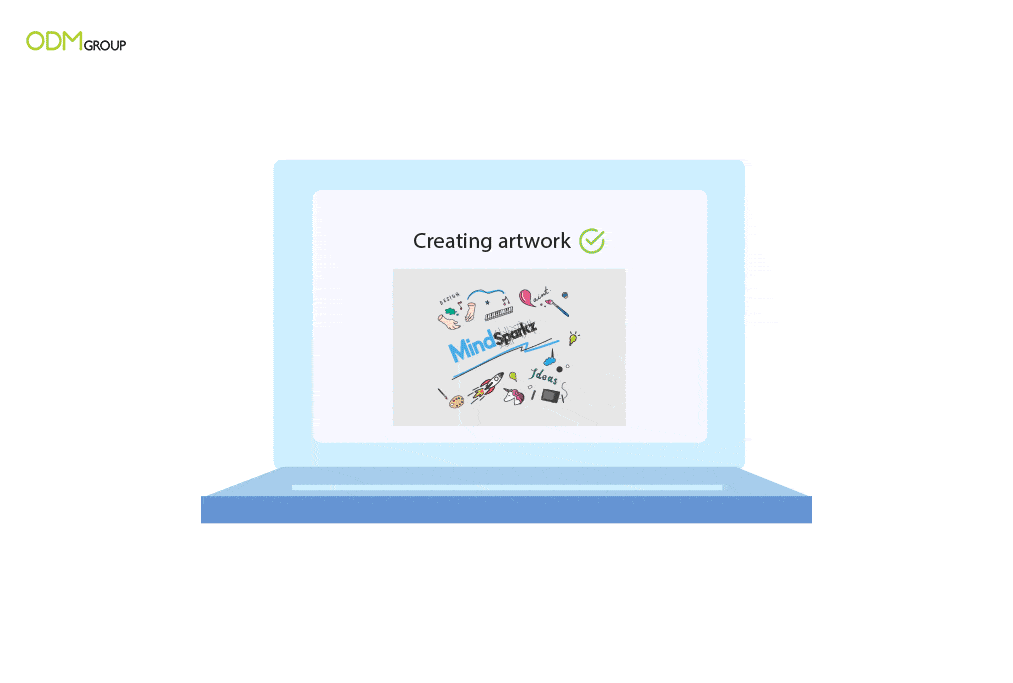
The name “Direct-to-Film” accurately reflects the core principle of this process. Instead of printing the design directly onto the garment or substrate, DTF printing involves printing onto a transparent film first.
The film acts as a carrier for the design, allowing for precise and vibrant transfers onto the desired surface.
Here is a list of the key materials needed for DTF printing:
1. DTF Printer
A specialized inkjet printer designed for DTF printing is essential. These printers can accommodate DTF films and are compatible with the inks used in the process.
2. Inks
DTF printing utilizes inkjet inks that are formulated specifically for the printing process.
The choice of ink depends on the type of DTF printer being used and the desired application. Water-based, eco-solvent, or pigment inks are commonly used for DTF printing.
3. DTF Films
Transparent DTF films act as carriers for the printed design. These films are specially coated to receive inkjet inks and adhesive layers.
Different DTF films offer various properties, such as stretchability, adhesion strength, and compatibility with different fabrics or materials.
The DTF film used in this process is made of a thin, transparent material that has several essential properties. It is specially coated to receive inkjet inks and adhesive layers, allowing for optimal print quality and adhesion.
The film is designed to be compatible with various types of inks, including water-based, eco-solvent, and pigment inks, depending on the printer and application.
4. Adhesive Powder
An adhesive powder is used in the DTF printing process to bond the ink from the film to the garment or substrate.
The adhesive powder is typically applied after the design is printed on the DTF film, ensuring proper adhesion during the transfer process.
5. Heat Press
A heat press is necessary for transferring the printed design from the DTF film onto the garment or substrate. The heat press applies heat and pressure, activating the adhesive layer and bonding the design to the material.
It is important to use a heat press with adjustable temperature and pressure settings to achieve optimal results.
6. Protective Paper
Protective paper, also known as release paper or parchment paper, is used as a barrier between the heat press and the DTF film during the transfer process.
It helps prevent ink or adhesive from directly contacting the heat press, ensuring clean and efficient transfers.
It is important to source high-quality materials from reputable suppliers to ensure the best results in DTF printing. Each component is crucial in achieving vibrant, durable, and long-lasting prints.
By using the right materials and equipment, businesses and individuals can unlock the full potential of DTF printing and create stunning customized products.
The Step-by-Step Process of DTF Printing
The DTF printing process involves several steps to transfer a design from a specialized film onto a garment or substrate. Here is a step-by-step guide to the DTF printing process:
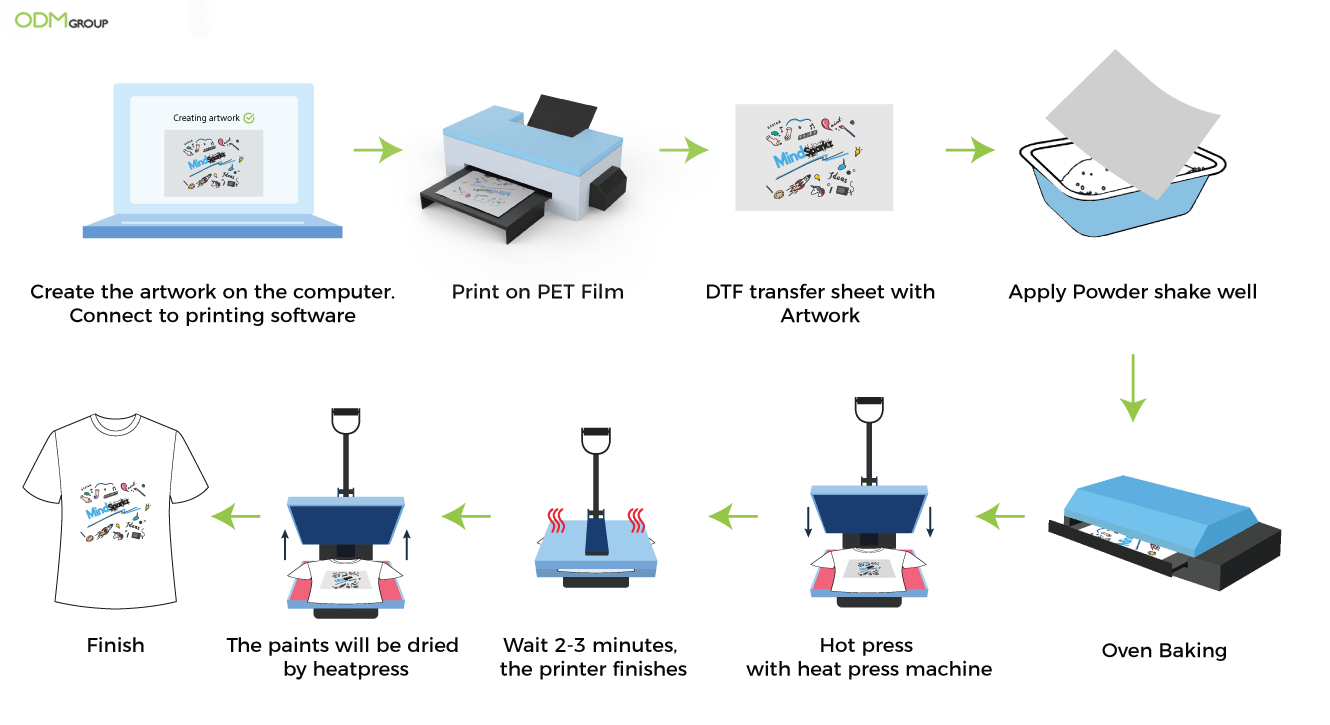
1. Design Preparation
- Start by creating or obtaining the desired design in a digital format. This can be done using graphic design software or by outsourcing the design to a professional.
- Adjust the design as necessary, making sure it is suitable for DTF printing. Pay attention to factors like size, resolution, and colour choices.
2. Film Preparation
- Choose the appropriate DTF film based on the fabric or material of the garment you will be printing on. Different films are designed for different materials to ensure compatibility.
- Load the selected DTF film onto a compatible inkjet printer. Make sure the film is loaded correctly and securely to avoid any printing issues.
- Print the design onto the DTF film using the appropriate ink settings and colour profiles. Follow the manufacturer’s instructions for optimal printing parameters.
3. Adhesive Application
- Prepare the garment or substrate for printing by ensuring it is clean and free from dust, lint, or any other particles that could affect the adhesion of the design.
- Apply a layer of adhesive onto the surface using a specialized adhesive application machine or by manually spreading the adhesive evenly. Ensure that the adhesive covers the area where the design will be transferred.
4. Film Transfer
- Carefully place the printed DTF film onto the garment or substrate, making sure that the adhesive side is facing down and in direct contact with the surface.
- Apply firm and even pressure to the film using a heat press machine. Set the heat press to the appropriate temperature and pressure settings recommended for the specific DTF film and material.
- The combination of heat and pressure helps the ink from the film to transfer onto the garment and adhere to the adhesive layer.
5. Curing the Print
- Keep the garment or substrate in the heat press for the recommended curing time. This time may vary depending on the specific DTF film and ink being used.
- Curing ensures proper adhesion and ink bonding, resulting in a durable print. It is crucial to follow the recommended curing time and temperature to achieve the best results.
6. Film Removal
- Once the curing time is complete, carefully remove the heat press and allow the garment to cool down before attempting to remove the DTF film.
- When the garment has cooled, gently peel off the DTF film from the surface. Take care not to damage the print during this process.
- The design should now be transferred onto the garment, displaying vibrant colours and sharp details.
7. Post-Curing (Optional)
- Some DTF prints may benefit from additional post-curing to further enhance durability and washability.
- If recommended by the DTF film or adhesive manufacturer, follow the provided post-curing instructions. This may involve applying heat again or allowing the print to cure for a specific period.
What Are the Advantages of DTF Printing?
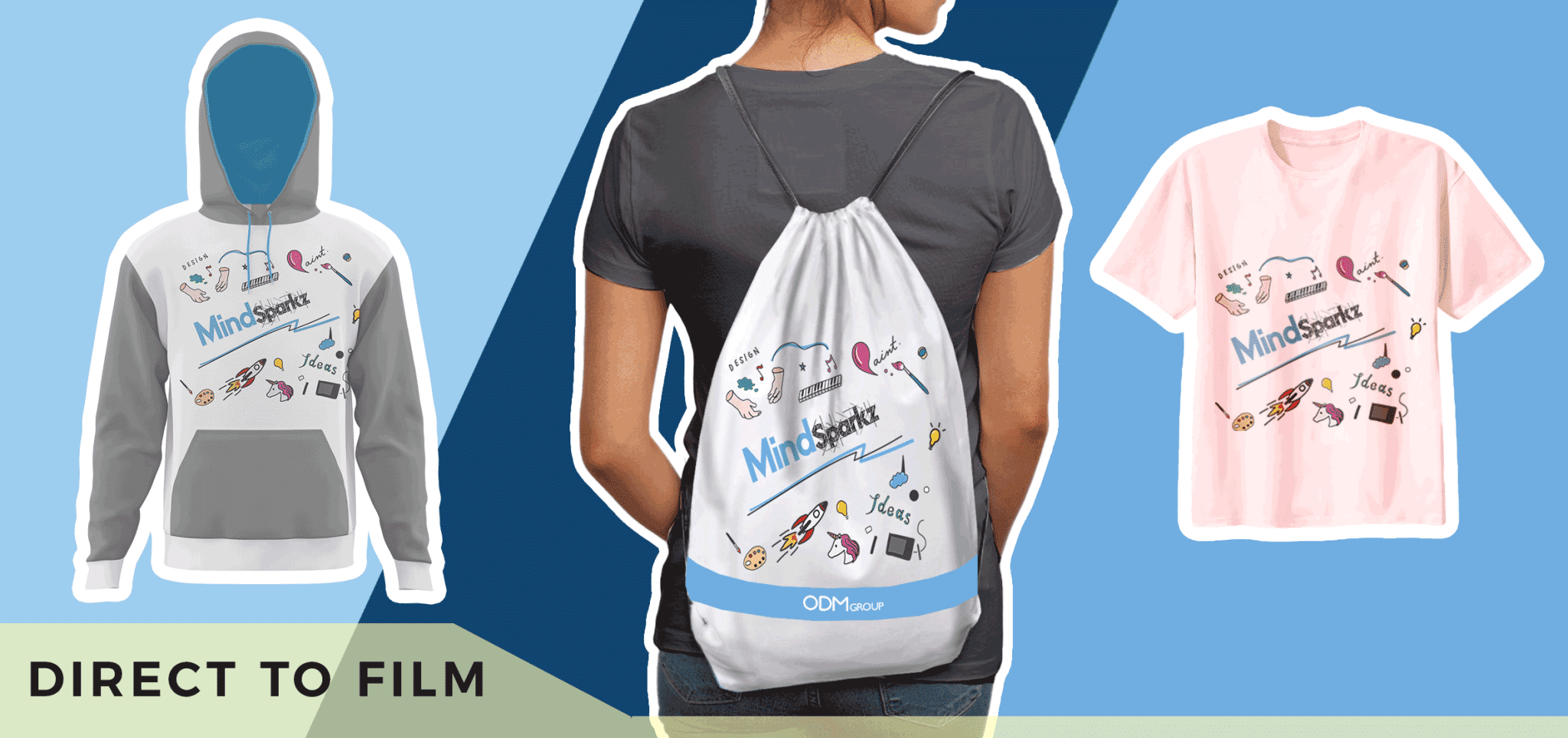
DTF vs DTG Printing: What Are the Differences?
| Aspect | DTF | DTG |
|---|---|---|
| Printing Method | Prints onto a special film, then transfer onto various materials | Prints directly onto the fabric of the garment |
| Compatibility | Suitable for a wide range of materials, including cotton, polyester, leather, etc. | Primarily used for printing on cotton-based fabrics |
| Print Quality | Produces vibrant and durable prints | Can produce high-quality prints, but durability can vary |
| Production Speed | Fast production process, allowing for quick turnarounds | Relatively slower compared to DTF printing |
| Setup Cost | Lower initial setup costs | Higher setup costs, including the purchase of a DTG printer |
| Design Complexity | Can handle intricate designs, gradients, and textures | Suitable for complex designs but may face limitations with fine details |
| Cost per Print | Cost-effective for one-off designs and small quantities | More cost-effective for larger print runs |
| Environmental Impact | Reduces water consumption and waste generation compared to traditional methods | Consumes more water and generates waste through pre-treatment and clean-up processes |
| Limitations | May face challenges with fine details on textured or dark fabrics | Colour vibrancy and durability can be affected by fabric quality and the pre-treatment process |
| Maintenance and Operation | Requires a DTF printer, special film, and heat press machine | Requires a DTG printer and regular maintenance |
| Market Applications | Versatile applications, including apparel, accessories, home decor, and promotional items | Predominantly used for custom apparel printing |
What Are the Potential Challenges and Limitations of DTF Printing?
-
Learning Curve and Initial Investment
While DTF printing offers numerous advantages, it does come with a learning curve for those unfamiliar with the process. Mastering the intricacies of DTF printing may require training or experimentation to achieve optimal results.
Additionally, investing in the necessary equipment, such as a DTF printer and heat press, can be a financial commitment for individuals or businesses looking to adopt this printing technique.
However, with proper guidance and practice, the learning curve can be overcome, and the initial investment can be justified by the benefits DTF printing offers.
-
Limited Availability of Specialized Equipment and Supplies
DTF printing is a relatively new printing technique, and as a result, the availability of specialized equipment and supplies may be limited in certain regions.
Locating a reliable supplier for high-quality DTF films, inks, and adhesives can pose a challenge, especially for those located outside major metropolitan areas.
However, as the demand for DTF printing continues to rise, it is likely that the availability of equipment and supplies will improve over time.
-
Restrictions on Intricate and Highly Detailed Designs
While DTF printing allows for vibrant and detailed designs, there may be limitations when it comes to extremely intricate or fine details. The printing process involves transferring the design from a film, which may not capture extremely fine lines or intricate textures accurately.
Designers and businesses must be aware of these limitations and consider simplifying or adapting complex designs to ensure optimal print quality.
However, advancements in DTF printing technology are constantly being made, and future developments may help overcome these limitations.
-
Environmental Considerations (Disposing films and excess adhesive)
As with any printing process, DTF printing raises environmental concerns, particularly regarding the disposal of film and excess adhesive.
The film used in DTF printing is a non-recyclable material, and the adhesive residue left on the garment after the print is cured needs to be properly managed.
Businesses utilizing DTF printing should prioritize environmentally friendly practices, such as proper waste management and exploring alternatives for reducing waste. It is essential to stay informed about eco-friendly options and seek sustainable solutions within the DTF printing industry.
Explore Wide Possibilities With DTF Printing!
At the ODM Group, we take pride in offering innovative solutions to enhance your promotional product campaigns. With our expertise in DTF printing, we can help you create visually captivating and attention-grabbing merchandise.
But that’s not all – we are committed to expanding your horizons by introducing you to a plethora of other decoration methods.
Our team of experts and in-house designers is here to guide you through the multitude of options available, helping you select the perfect decoration method that aligns with your brand’s identity and campaign goals.
Together, we can turn your promotional products into powerful marketing tools that leave a lasting impression on your target audience.
Dive into a treasure trove of decoration methods to spruce up your promotional products. Take a peek at this page!
DTF Printing FAQs
All you need to know about direct-to-film printing!
What is DTF printing?
DTF printing, which stands for Direct-to-Film printing, is a digital printing method that transfers ink directly onto a special film, which is then heat transferred onto a garment or substrate. It offers high-quality prints with vibrant colors.
How does DTF printing work?
DTF printing involves several steps. First, the design is printed onto a special film using a DTF printer that applies a layer of ink. Once the design is printed, a powdered adhesive is applied to the inked areas. The film is then placed on the garment or substrate, and heat and pressure are applied to transfer the ink and adhesive onto the material. Finally, the excess powder is removed, leaving a durable and vibrant print.
What are the advantages of DTF printing?
DTF printing offers several advantages. Firstly, it allows for high-resolution and full-color prints with excellent vibrancy. It can reproduce intricate details and gradients accurately. Secondly, DTF printing is versatile and can be used on a wide range of fabrics, including cotton, polyester, blends, and even some non-textile surfaces. It also allows for printing on dark or colored garments without the need for a white under base. Lastly, DTF prints have good durability, with resistance to fading and cracking, making them suitable for long-lasting designs.
Can DTF prints be washed and cared for like regular prints?
Yes, DTF prints can be washed and cared for like regular prints. It is recommended to follow the care instructions provided by the manufacturer or printer. Typically, DTF prints can withstand regular machine washing with gentle detergents and can be tumble-dried at low temperatures. However, to ensure the longevity of the print, it is advisable to avoid harsh chemicals, bleach, and high-temperature washes or ironing.
Are there any limitations or considerations with DTF printing?
While DTF printing offers many advantages, there are some limitations to consider. Firstly, DTF printing requires specialized equipment and materials, which may involve higher upfront costs compared to other printing methods. Additionally, DTF prints may have a slightly different feel compared to traditional screen printing or direct-to-garment (DTG) prints. It is also important to note that the quality of the final print can be affected by factors such as the quality of the film, ink, and adhesive used, as well as the expertise of the operator.
Can DTF printing be used for small-scale or single-item printing?
Yes, DTF printing is well-suited for small-scale or single-item printing. Unlike traditional screen printing, which often requires a minimum order quantity, DTF printing allows for on-demand production, making it suitable for customized or personalized items. It offers cost-effective solutions for printing small quantities, individual designs, or even prototypes.
Is DTF printing environmentally friendly?
DTF printing can be considered more environmentally friendly compared to traditional screen printing methods. It eliminates the need for water-intensive processes, such as screen cleaning, and reduces the amount of waste generated during production. Additionally, DTF inks are typically water-based and do not contain harmful chemicals like some other printing methods.
How durable are DTF prints?
DTF prints are known for their durability. The ink and adhesive used in DTF printing create a strong bond with the fabric or substrate, resulting in excellent wash resistance and color retention. DTF prints can withstand multiple washes without significant fading or cracking, ensuring the longevity of the design.
Can DTF printing be used for multi-colored or complex designs?
Yes, DTF printing is ideal for multi-colored and complex designs. It offers high color accuracy and the ability to reproduce intricate details, gradients, and fine lines. DTF printers use advanced technology to achieve precise ink placement, ensuring that even the most complex designs can be accurately reproduced on garments or substrates.
